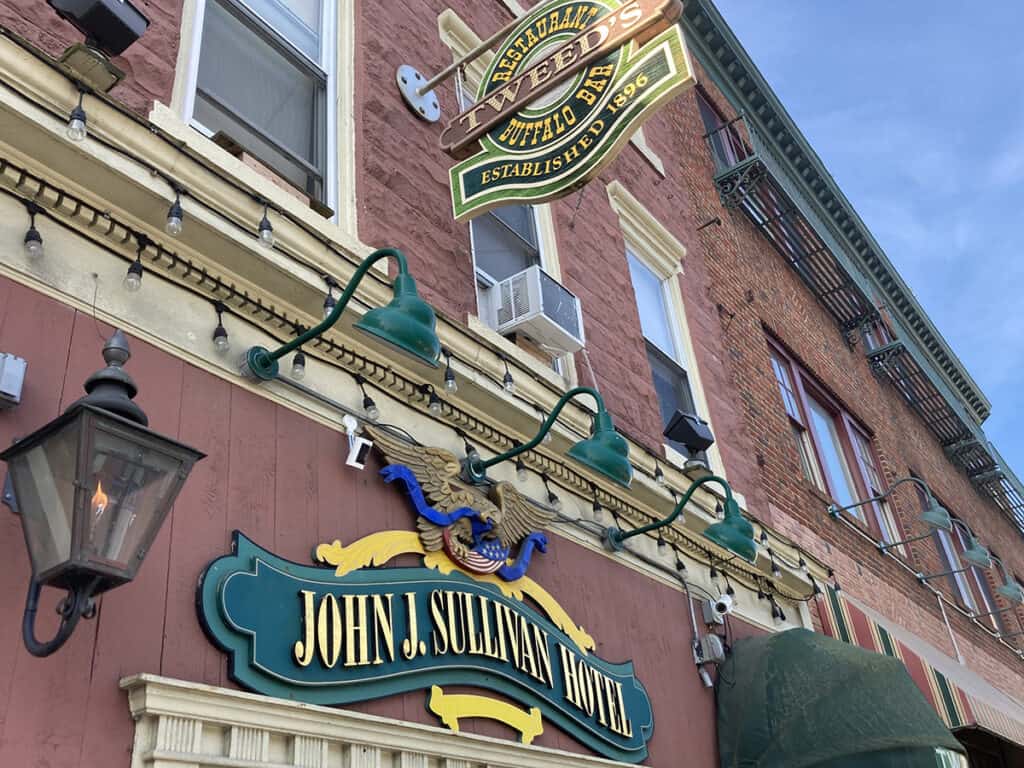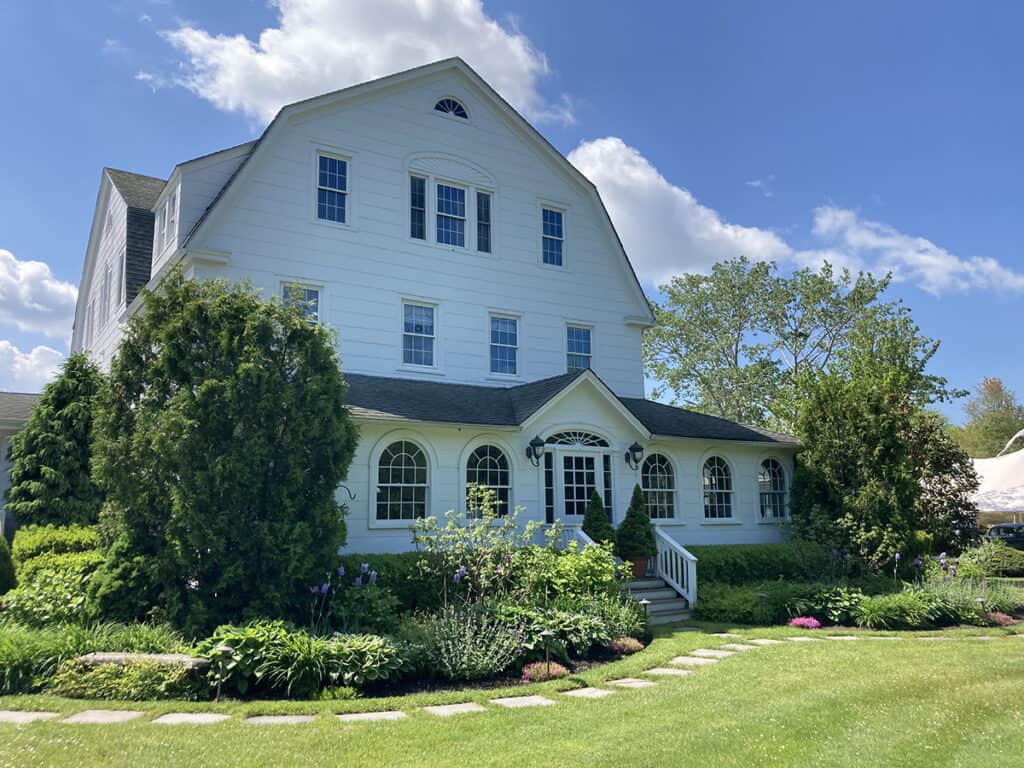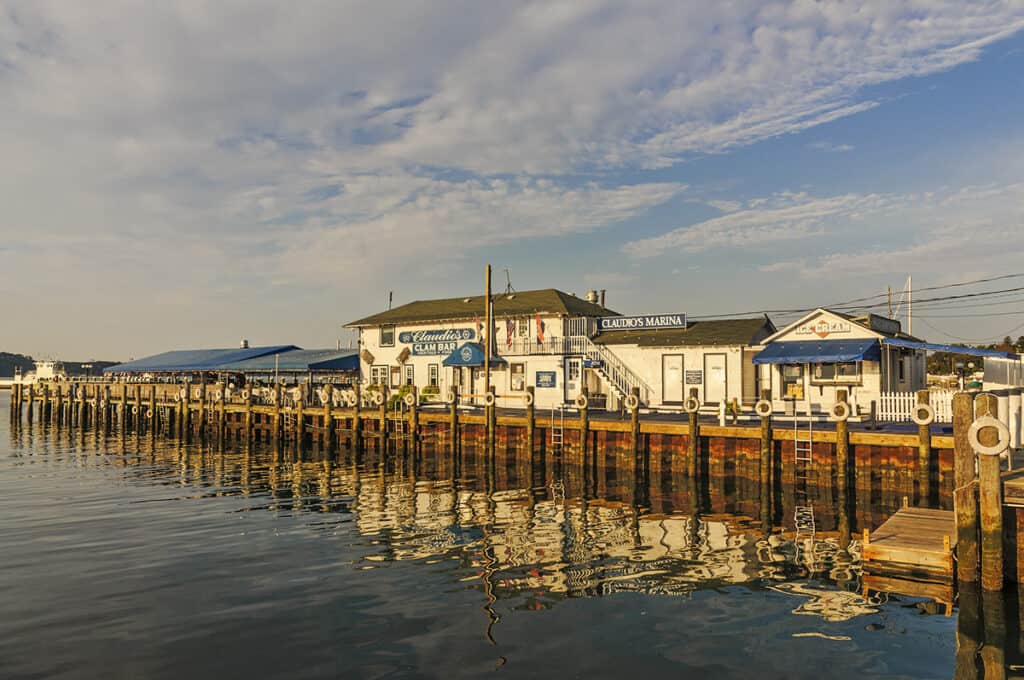What could be the connection between the Canoe Place Inn in Hampton Bays, Claudio’s in Greenport, East Quogue’s Stone Creek Inn and Tweed’s Restaurant in Riverhead? Each of these storied East End foodie institutions were once illegal speakeasies during Prohibition, procuring, distributing, and serving illegal liquor.

The East End of Long Island played an interesting role in the history of Prohibition in the United States. The temperance movement — the movement towards limiting or prohibiting the sale and consumption of intoxicating beverages and liquors — took firm footing on the East End early in the 19th century. Leaders of the Presbyterian Church, meeting in Aquebogue in 1811, adopted a pastoral position supporting temperance; the non-sectarian Sag Harbor Temperance Society was formed in 1829 with the goal of banning the sale of all “ardent spirits”. The Sag Harbor Temperance Society was thereafter joined by the Total Abstinence Temperance Society in 1838 and the Young Men’s Total Abstinence Temperance Society in 1841. By mid-century, close to 25 percent of the population of Sag Harbor supported temperance.
Temperance societies sprung up across the United States, many faith-based with enormous political power and influence. Prohibition became the law of the land in January 1919 when Congressman Andrew J. Volstead, backed by evangelicals and temperance reformers, introduced the 18th Amendment to the U.S. Constitution (often called the “Volstead Act”), which defined intoxicating liquors as any beverage containing more than one-half of one percent alcohol.

Enter the rumrunners, bootleggers and lawbreakers, smuggling liquor from ocean-going supply vessels waiting in international waters just three miles off the East End shoreline (later changed to 12 miles). Small, fast boats called rumrunners (often owned and operated by local fishermen and farmers) would race out to these supply vessels, load up whatever they could carry and head for the East End’s numerous bays and coves while often evading the Coast Guard, police, and other law enforcement officials. The smuggled booze was sent on by waiting truck to New York City or transferred by secret doors to some of the more famous East End speakeasies.

Local lore claims that Claudio’s, standing on stilts over the waters of Greenport Harbor, had a secret door in the floor of the kitchen. Bootleggers boated in under the building and passed the liquor through the trap door, some of which was served in the upstairs speakeasy, with its peephole and secret password. Similarly, the Canoe Place Inn of Hampton Bays boasted secret trapdoors and subterranean tunnels for hiding liquor. In July 1921, a major fire destroyed the Canoe Place Inn; it was reconstructed in 1923 and remained a favorite destination throughout the rest of Prohibition. Likewise, the Stone Creek Inn (originally the Ambassador Inn) located in East Quogue was a popular speakeasy, its location on a remote creek making it a perfect location for receiving illegal hooch. The speakeasy inside Riverhead’s J.J. Sullivan Hotel — now the site of Tweeds Restaurant & Buffalo Bar — was reportedly never raided, as it was frequented by Tammany Hall leader “Boss Tweed” and his cronies. The speakeasy was hidden behind a barber shop operating on the first floor of the building. Liquor was moved through a series of trapdoors and dumbwaiters to the waiting patrons.











!['The Maples' is a prestigious generational compound of two extraordinary estates: 18 Maple and 22 Maple. This rare offering, designed by luxury architect Lissoni partners New York and developed by visionaries Alessandro Zampedri-CFF Real Estate and JK Living, redefines opulence with the highest quality of craftsmanship and captivating views of the Atlantic Ocean. Represented by @nycsilversurfer and @challahbackgirl of @douglaselliman. [link in bio]](https://hamptonsrealestateshowcase.com/wp-content/uploads/sb-instagram-feed-images/438891010_1083749139481747_7890082604579275354_nfull.jpg)
![Featuring 360-degree water views on Mecox Bay, the Atlantic Ocean and Channel Pond, 1025 Flying Point offers the ultimate beach cottage that is flooded with natural light. With panoramic views, proximity to the ocean, and a private walkway to Mecox bay for kayaking or paddle boarding, this truly is a special retreat. Represented by @ritcheyhowe.realestate and @hollyhodderhamptons of @sothebysrealty. [link in bio]](https://hamptonsrealestateshowcase.com/wp-content/uploads/sb-instagram-feed-images/438994305_737511778456166_4602476013493875279_nfull.jpg)
![Attention advertisers! 📣 Secure your spot in the highly anticipated Memorial Day edition #HRES. Reach thousands of potential clients and showcase your brand in one of the most sought-after publications in the Hamptons, NYC, Palm Beach, and beyond. Contact us now to reserve your ad space! [link in bio]](https://hamptonsrealestateshowcase.com/wp-content/uploads/sb-instagram-feed-images/438549843_275102939023235_6718257301437562124_nfull.jpg)
![You eat with your eyes, and on the East End, it’s important that what you eat looks just as good as how it tastes. At @rosies.amagansett, the restaurant itself is plenty photo-worthy with blue ceramic tiling and yellow and white striped fabric wallpaper. But for a dish that will light up your photos, head directly to the salmon tartare! [link in bio]](https://hamptonsrealestateshowcase.com/wp-content/uploads/sb-instagram-feed-images/437094269_7296727147115953_1594410326824303644_nfull.jpg)

![We were honored to be the media sponsor for @blackmountaincapital's open house event with @jameskpeyton and @jfrangeskos at 11 Dering Lane in East Hampton! Other sponsors included @landrover, Feline Vodka, @rustikcakestudio, @la_parmigiana, @lahaciendamexicangrill11968, @homesteadwindows, Stone Castle, @talobuilders, and @thecorcorangroup.
A big thank you Carrie Brudner of Black Mountain Capital for putting together this fabulous event! [link in bio]](https://hamptonsrealestateshowcase.com/wp-content/uploads/sb-instagram-feed-images/437081213_762912965932136_6847332836522786568_nfull.jpg)

![Blooms Galore at the Long Island Tulip Festival! 🌷✨ Mark your calendars for April 15th as the vibrant tulips at @waterdrinkerlongisland burst into full bloom! Enjoy a day filled with colorful splendor, food trucks, live music, and more. [link in bio]](https://hamptonsrealestateshowcase.com/wp-content/uploads/sb-instagram-feed-images/437083429_974242677583725_6855805712693638343_nfull.jpg)
